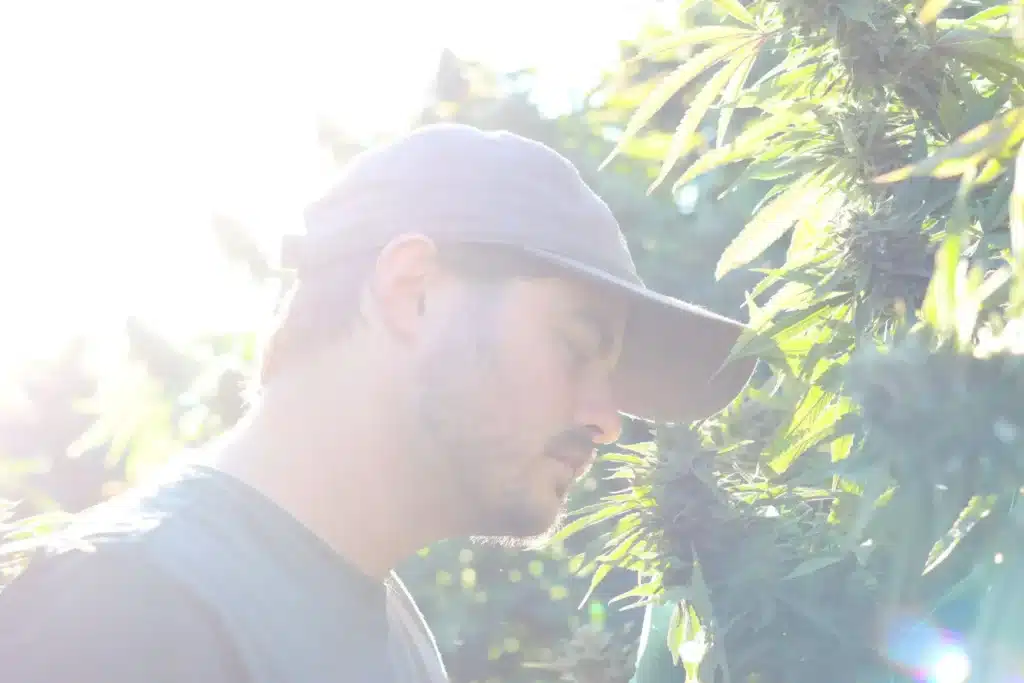Optimal Timing for Harvesting Cannabis Plants for Maximum Potency

Harvesting cannabis is both an art and a science. Growers aim to maximize potency and yield. But when to harvest marijuana? Many factors influence the optimal harvest window.
Cannabinoid and terpene levels change as plants mature. Harvesting too early means lower potency. Waiting too long can degrade quality. Knowing when to harvest is key.
Indoor growers have more control over conditions. Outdoor crops are subject to the elements. In both cases, carefully monitoring trichomes is essential. Trichomes are the crystals that form on buds.
Clear trichomes indicate plants aren’t ready. Milky trichomes signal peak potency. Amber trichomes mean cannabinoids are degrading.
Properly timing the harvest maximizes quality and quantity. It’s a critical decision that impacts the final product. In this article, we’ll explore when to harvest cannabis. We’ll look at the science behind bud development. And we’ll share tips for determining the ideal harvest time.
The Significance of Proper Harvest Timing for Cannabis
Harvesting at the right time is crucial. Harvesting cannabis is explicitly no exception. The right timing affects potency, flavor, and overall quality. It is a key factor in producing top-notch buds.
Cannabinoid production is activated during the flowering stage. The plant’s trichomes produce THC, CBD, and other cannabinoids. As the plant matures, the trichomes change color.
Harvesting too early results in weak, less developed buds. Waiting too long leads to the degradation of cannabinoids. Flavor and aroma also decline after peak ripeness.
Careful observation of trichomes helps determine the ideal time to harvest weed. Farmers use magnification to assess the color and transparency of the trichomes.
Variables Influencing Harvest Timing
Choosing the ideal time to harvest weed plants is a difficult task. Many variables influence when the buds reach peak potency and quality. Understanding these factors helps growers make informed decisions:
- Genetics. It plays a vital role in choosing when to harvest. Indica, sativa, and hybrid varieties mature at different rates. Flowering time can vary significantly from variety to variety.
- Climate and growing conditions. Plants grown outdoors are subject to seasonal changes in light and temperature. These changes signal to the plants that it is time to end flowering. Those who grow plants indoors have more control over conditions.
- Appearance of trichomes. It is a crucial indicator of maturity. These tiny crystals form on buds and leaves. They are transparent at first, then turn milky, and finally amber. Growers watch the color of the trichomes to determine when it’s time to harvest cannabis.
- Nutrient levels and health. Underfed plants may mature slowly or incompletely. Overfed plants can get nutrient burn, which delays harvest. Nutrient management is vital for a timely and quality harvest.
Drying and curing methods can compensate for minor timing errors. But the goal is still to harvest at the peak of maturity. Keeping these variables in mind helps to select the ideal harvest. It takes experience, careful observation, and good decision-making. With practice, growers will be able to optimize their harvest. It will help in getting top-notch buds.
Cannabis Growth Cycle and Harvesting Phases
The growth cycle of cannabis consists of several crucial phases. Each phase presents unique challenges and opportunities for growers. Understanding these phases is essential to properly harvesting cannabis plants:
- Germination. It is the first phase in which seeds germinate into sprouts. High humidity and minimum light are key factors in this phase. Sprouts are vulnerable and require careful monitoring.
- Vegetative phase. It is characterized by rapid plant growth. During this time, growers train and shape the plants. Techniques such as topping, FIMing, and LST maximize light exposure. Between 18-24 hours of light per day support the growing season.
- Topping. This involves cutting off the top of the main stem of a young plant. It encourages the growth of multiple main colas (flowering sites) instead of just one, potentially increasing overall yield. Topping also helps create a bushier plant structure.
- FIMing. Similar to topping, but instead of removing the entire top, only about 75-80% of the new growth is pinched or cut. This technique often results in more main colas than topping, but with less stress to the plant.
- LST (Low Stress Training). This non-destructive method involves gently bending and tying down branches to create a flatter, more even canopy. LST allows better light penetration to lower branches and can increase overall yield without causing significant stress to the plant.
- Flowering. It occurs when light levels are reduced to 12 hours per day. Buds begin to develop on the plants, and the females produce resin glands. Flowering lasts 6-12 weeks, depending on the variety.
- Harvesting weed. It occurs when the buds reach the peak of maturity. Farmers watch the trichomes change color from transparent to milky and amber, choosing the right time to harvest.
- Drying. It is the next stage after harvesting, which usually lasts 5-15 days. The buds are hung or spread out on drying racks in a controlled environment. Proper drying preserves quality and prevents mold.
- Curing. It is the final step, where the buds are stored in airtight containers. During the curing process, chlorophyll is broken down, enhancing the flavor and smoothness. This phase can last from a few weeks to several months.
Understanding each phase of the cannabis growth cycle is paramount. You will understand when to harvest marijuana and how to further adapt your strategies to changing needs. Mastering these phases is key to producing high-quality cannabis.
Essential Signs for When to Harvest Cannabis
Knowing when to harvest cannabis is an essential skill for farmers. A few basic signs indicate that the buds have reached peak maturity. Paying close attention to these signs ensures a timely and successful harvest:
- Trichome color. It is one of the most reliable indicators of harvest. These tiny mushroom-shaped glands cover the buds. Trichomes contain the plant’s cannabinoids and terpenes. They are transparent at first, then turn milky, and finally amber. Mostly milky trichomes with some amber ones signal peak potency.
- The color and structure of the pistil. Pistils are the hair-like filaments that emerge from the buds. At first, they are white and straight, but then they darken and curl inward. When about 70-90% of the pistils have darkened, it is time to harvest weed. However, pistils may depend on the particular cultivar and may be less reliable than trichomes.
- Bud density and size. During the last weeks of flowering, the buds enlarge significantly. They become denser, heavier, and more resinous. However, allowing the buds to grow too large can reduce potency.
- Yellowing of the leaves. This is a natural sign of the plant’s maturity. Once flowering is complete, the leaves often change from green to yellow. It is because the plant switches energy from the leaves to the buds. However, yellowing the leaves does not mean it is time to harvest the cannabis plant.
- Flowering time. It is another common reference point for harvesting. Most varieties have a documented flowering period, such as 8-10 weeks. However, this period may vary depending on the phenotype and growing conditions. Flowering time is a useful estimate but should not be the sole criterion for harvesting.
It is best to use a combination of these traits. The most reliable indicators are trichome color, pistil appearance, and bud density. With experience, farmers develop a flair for the ideal harvest window. Patience, careful observation, and good record-keeping contribute to a timely harvest of cannabis.
Harvesting Periods for Various Desired Effects
The timing of harvesting weed early or late can significantly affect the final product. Different harvest periods produce different desired effects in the buds. Understanding these nuances allows growers to tailor the harvest to achieve specific results:
- Early harvest. This is when the trichomes are mostly clear, and some are milky. At this stage, THC levels are lower, and CBD levels are higher. Cones harvested in the early stages tend to have a more refreshing, energizing flavor. This effect is often described as cerebral and creative. Early harvest can be ideal for daytime use or for those who are sensitive to THC.
- Peak harvest. When the trichomes are mostly milky in color with some amber, it’s peak harvest time. THC levels are at their highest. It can produce strong intoxicating effects. Harvesting weed plants during this period gives a balanced high. It is both cerebral and physical. It is the most common harvest time for recreational and medicinal use.
- Late harvest. It is the time when the trichomes are predominantly amber in color. At this stage, THC begins to break down into CBN, a less intoxicating cannabinoid. Cones harvested in the later stages have a more calming, body-focused effect. This effect is often described as relaxing, calming, and sleep-inducing. Late-harvest weed may be preferred for nighttime use or pain relief.
It is important to note that the timing of harvesting weed depends on the variety. Some varieties may have higher levels of CBD or CBN. Growers should research the typical cannabinoid profile of their strain. The harvesting time can then be adjusted depending on the desired effects.
Techniques for Harvesting Cannabis
Harvesting cannabis is the most crucial step in the growing process. The technique used can affect the quality and yield of the buds. We know a few standard methods of harvesting cannabis.
Harvesting the whole plant involves cutting the entire plant at once. It is the easiest method, but it can lead to uneven drying. Branch harvesting allows for more precise timing by removing individual branches. It allows the upper buds to be harvested at the peak of maturity, allowing the lower buds to take longer to mature.
Step-by-step harvest cannabis takes branch harvesting to a new level. For a week or more, farmers harvest a few branches each day. It maximizes quality by harvesting each bud at the peak of maturity. Partial picking is another option where farmers cut individual buds as they mature. It is time-consuming but gives the greatest control.
Regardless of the method, harvesting weed requires clean and sharp tools. Gloves prevent hands from getting dirty and sticky. A careful touch avoids damage to the trichomes. Proper labeling is key to keeping track of the drying and curing process.
The best harvesting method depends on the scale and purpose of the grower. Experimenting with different methods can help growers find their preferred approach.
FAQ
How can I tell when my cannabis plant is ready for harvest?
Monitor trichome color with a magnifier. Harvest when they turn from clear to mostly milky, with some amber for maximum THC content.
What is the duration of the flowering stage before it’s time to harvest?
Most cannabis strains are ready to harvest 7-9 weeks after the start of the flowering stage, but this varies by strain.
What distinguishes wet trimming from dry trimming?
Wet trimming is trimming buds right after harvest, before drying. Dry trimming is trimming after drying and before curing. Dry trimming is easier.
Will using an automated bud-trimming machine damage my harvest?
No, high-quality bud-trimming machines are designed to gently handle buds without damaging the trichomes, but hand-trimming provides the most control.
